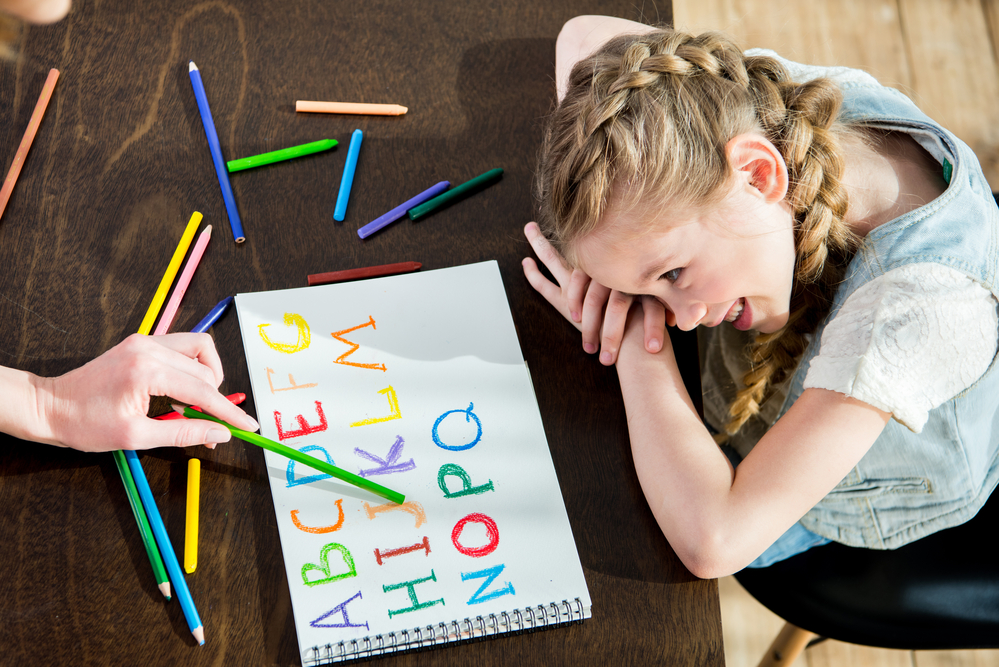“Encouraging a child means that one or more of the following critical life messages are coming through, either by word or by action: I believe in you, I trust you, I know you can handle this, You are listened to, You are cared for, You are very important to me.”
- Barbara Coloroso
Children tend to touch different milestones with their growing age. However, it is a natural process, but at the same time, it is something that parents contribute to their children’s growth and overall brain development. Here, parents need to pay detailed attention to keep up with the process.
Now, when talking about the different milestones of a child’s development and early learnings, it is hard not to mention alphabets. It won’t be wrong to refer to alphabets as the base foundation of education for a child. It is essential and crucial too.
This takes us to the question that children start to understand, learn, and speak the different alphabets? This is a significant question that almost every new parent goes through. Initially, you may see it as a challenging phase of your parenthood, but with time and consistent improvement in your child’s learning pattern, it will turn out to be an overwhelming experience.
The right age for a child to learn alphabets
Talking about a child’s development and learning process, there are different stages of the same. Here are some details about the same.
Recognition – Most children start to recognize and use the letters somewhere in between the age of three to four years. Children are more likely to remember and recite the alphabet their name starts with. Moreover, it depends on how fast the learning process is. For instance – a baby boy named Alex will easily learn to recite and remember the letter ‘J’ the most. Using the same pattern, you can make your child understand the other alphabets. Start to relate the alphabet with everyone’s names in the family. This helps to fasten up the learning process making it easier for the child to remember letters and speech more efficiently. This process has something to do with the psychology of the human brain. It triggers the emotional corner of the human brain, making it remember things easily.
Recitation – Generally, a child can understand and learn the basics by the age of three or four. As a parent, you need to evaluate that your child starts to recite the alphabet fluently. However, the learning capability of every child varies, but the standard age is between three to four years.
If you wish your child to start understanding the alphabet at this age, start making them listen to songs more often. Sing the ABC song, which is more like a tour to the alphabets helping your child know the different alphabets and their respective sounds. Parents play an essential role in improving the recitation potential of the child. The more you make them practice, the more they can pick up new alphabets.
Understanding the value of sounds – The learning process must include making your child understand how to recite new words and alphabets. By the age of five years, a child should start to pronounce the sounds and words clearly. This is often associated with the accompanying sounds, also known as phonics. By this age, children should be able to relate the words and sounds with their purposes. For instance – if you say a word like ‘Book,’ your children must be able to relate it with reading or studying. However, children are more likely to start learning phonics in kindergarten but decoding their literal meaning, and use may delay.
Writing alphabet letters – Generally, children are able to start writing the alphabets and letters in preschool or kindergarten. To be precise, it happens during the age of four to five years. Although you may have enrolled your child in online classes for a long time, make sure to continue making them practice at home. This will develop the habit of practicing alphabet letter writing more often and getting perfect in it. Writing alphabets seems to be a difficult task for the children in the initial stage. Regular practice can help you improve the alphabet writing skills and speed effectively.
What if the child is not learning it all at the defined age?
Most parents stress their children not learning or responding to the learning pace according to their age. Remember, every child is different. Thus, their learning pace may vary based on the learning potential and activeness of the child’s brain. If you don’t witness progress even after making the child undergo the rigorous checks, you must go for a minor setback.
If nothing works for your child, it is advisable to consult a practitioner and get a consultation immediately. Reading and writing alphabets at the specified age can be serious trouble for the child. It should not be neglected at any cost.
What are the most common ways to help your child understand letters and sounds at the defined age?
Although you may not require to practice these tricks if you fail to witness some progressive changes in your child, make sure to hop on these practices –
- Do the alphabet puzzles – Kids are in love with new and experimenting games. Therefore, it is essential to involve them in puzzle games the most.
- Read to kids – Children are more likely to recite or repeat everything you say; thus, start reading the poems or alphabets for your kid.
- Go for a scavenger hunt – Add a little bit of fun to the learning process and ask your child about the different letters in exciting ways.
The last thoughts
A parent can understand the details of understanding alphabets, and using them as adults do is possible only when s/he becomes a part of the child’s learning process. There are many factors to consider when you contribute to a child’s early learning. There are multiple factors, from keeping a check on the child’s behavior to thinking when your child has started to understand alphabets.





